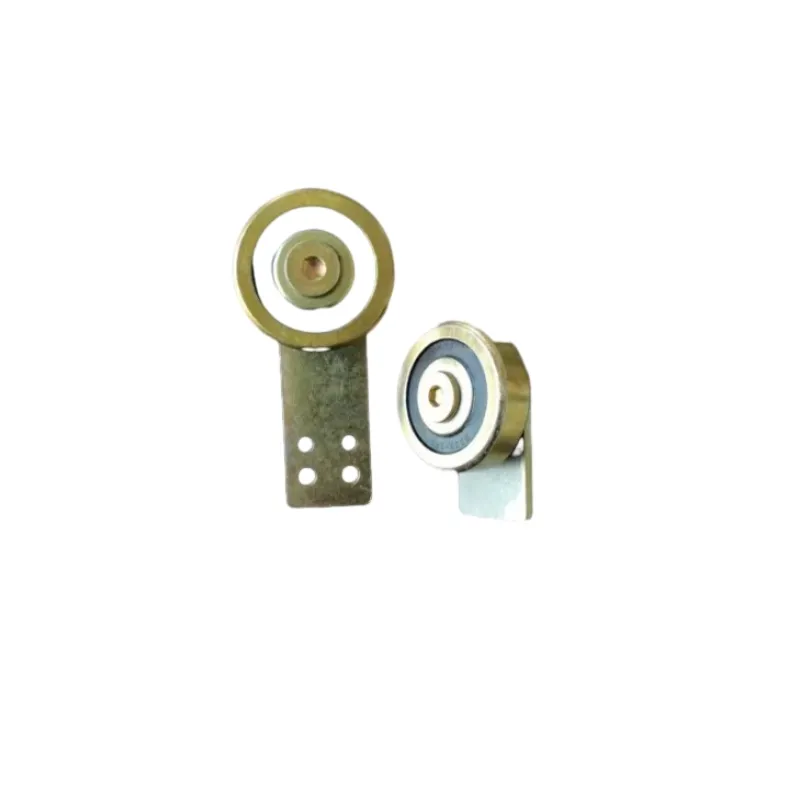
12 月 . 03, 2024 18:46 Back to list
cylindrical roller bearings or spherical roller bearing
Understanding Cylindrical Roller Bearings and Spherical Roller Bearings
Bearings play a vital role in the machinery and automotive industries, providing the necessary support for rotating components. Two common types of rolling element bearings are cylindrical roller bearings and spherical roller bearings. Both play important roles in various applications, but they have distinct characteristics that make them suitable for different operating conditions.
What are Cylindrical Roller Bearings?
Cylindrical roller bearings consist of cylindrical rollers that are positioned between an inner and outer ring. They are designed to accommodate radial loads and can also handle some axial loads; however, their main strength lies in their ability to support heavy radial loads. The rollers are fitted in such a way that they can easily roll within the bearing raceways, minimizing friction and wear.
One of the significant advantages of cylindrical roller bearings is their high load-carrying capacity. The rollers distribute the load across a larger surface area compared to ball bearings, allowing them to handle heavier loads effectively. These bearings are used in applications like electric motors, gearboxes, and machine tools, where minimizing mechanical resistance is crucial.
Cylindrical roller bearings can be further categorized into a few types, such as single-row, double-row, and multi-row configurations. Single-row cylindrical roller bearings are the most common, suited for applications with limited axial space. Double-row designs are used where there is greater load-bearing capacity and stiffness requirements. Multi-row bearings, while less common, are used in some specialized situations.
What are Spherical Roller Bearings?
Spherical roller bearings feature barrel-shaped rollers that are configured to roll between an inner ring with two raceways and an outer ring with a spherical surface. This design enables the bearing to accommodate misalignment and axial loads in both directions, making them a popular choice for applications where shaft misalignment is likely to occur.
The self-aligning ability of spherical roller bearings is one of their standout features. They can compensate for misalignment resulting from mounting errors or deflections in machinery under load. This quality makes them highly effective in heavy-duty applications, such as in the construction and mining industries where large loads and rough operating conditions are common.
cylindrical roller bearings or spherical roller bearing

Like cylindrical roller bearings, spherical roller bearings also have a high load-carrying capacity, but their design allows for better performance under varying loading conditions
. They can support radial loads as well as considerable axial loads and are commonly used in applications such as bulk handling equipment, cranes, and rolling mills.Key Differences Between the Two Types
While both cylindrical and spherical roller bearings share some characteristics, there are distinct differences that can affect their application suitability
1. Load Orientation Cylindrical roller bearings excel in handling radial loads, while spherical roller bearings are better suited for applications where axial loads and misalignments are present.
2. Misalignment Tolerance Spherical roller bearings can tolerate misalignment due to their spherical outer raceway, whereas cylindrical roller bearings are less forgiving of misalignment.
3. Size and Design Generally, cylindrical roller bearings have a more compact design compared to spherical roller bearings, which may require more space due to their design and additional features.
4. Cost and Maintenance The cost can vary based on the design and application, but typically, maintenance requirements differ as well. Spherical roller bearings may require more regular checks due to their complex design.
Conclusion
Cylindrical roller bearings and spherical roller bearings are essential components in various mechanical systems, each offering unique benefits suited for different applications. Understanding their characteristics, advantages, and limitations allows engineers and designers to select the right bearing for their specific needs, ensuring enhanced performance and longevity of the machinery involved. Whether it's support for high-speed applications or heavy-duty workloads, both bearing types contribute significantly to the efficient functioning of machines across numerous industries.
Latest news
-
Unlocking Efficiency with Spherical Roller Bearings
NewsOct.29,2024
-
The Ultimate Guide to Thrust Ball Bearings
NewsOct.29,2024
-
The Power of Thrust Roller Bearings: Engineered for Excellence
NewsOct.29,2024
-
The Power of Deep Groove Ball Bearings for Your Application Needs!
NewsOct.29,2024
-
The Power and Performance of Cylindrical Roller Bearings
NewsOct.29,2024
-
High-Quality Ball Bearing Manufacturing Machines
NewsOct.29,2024
